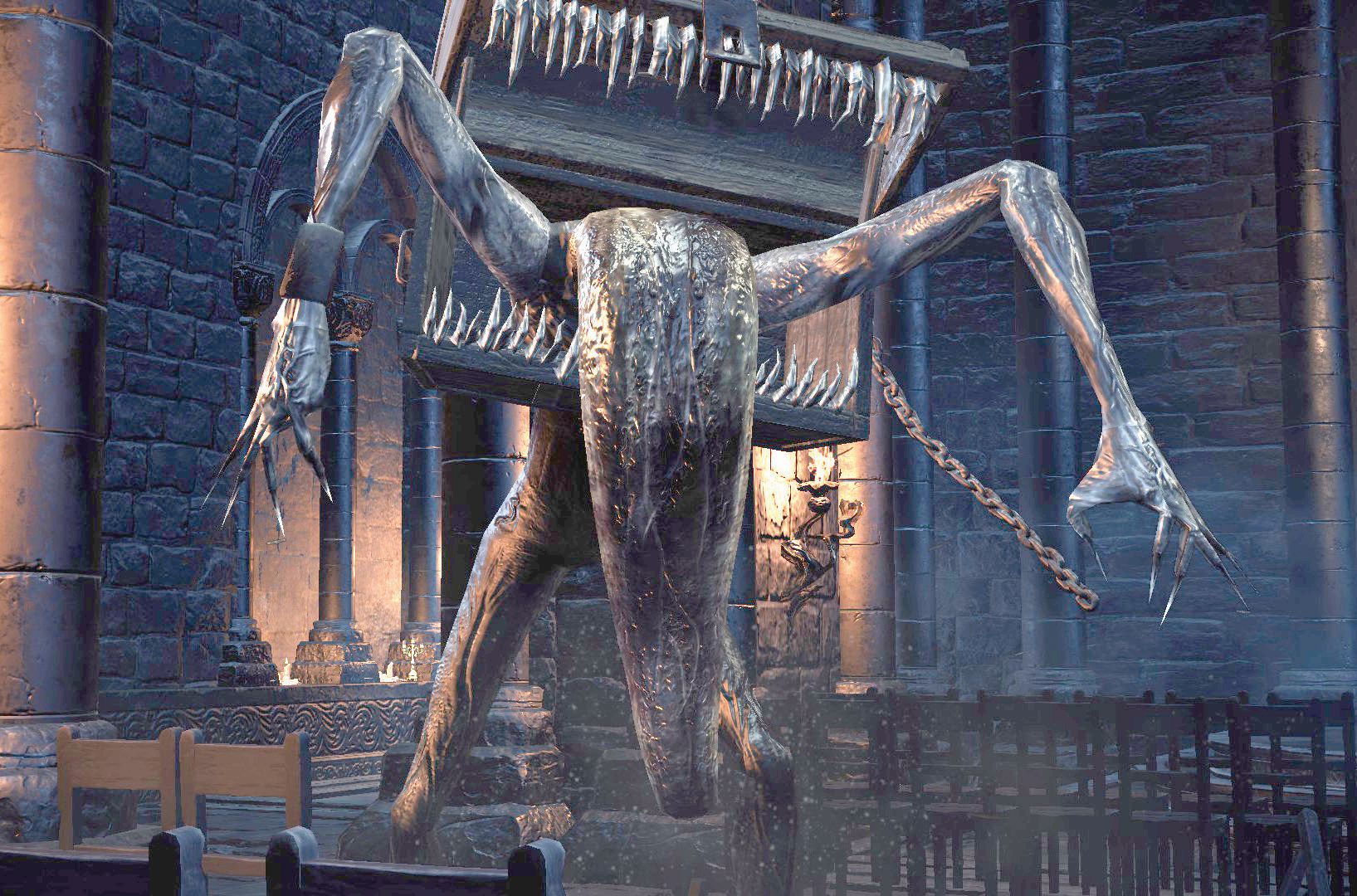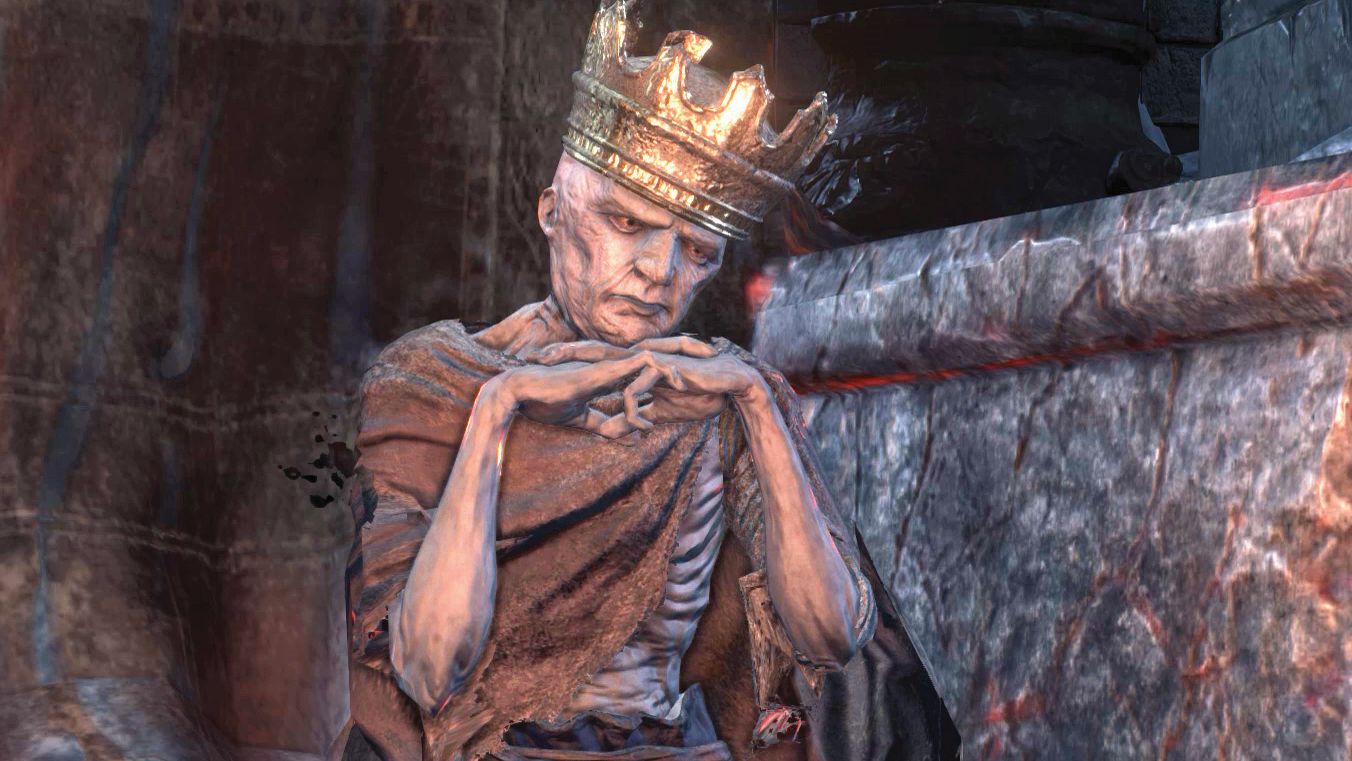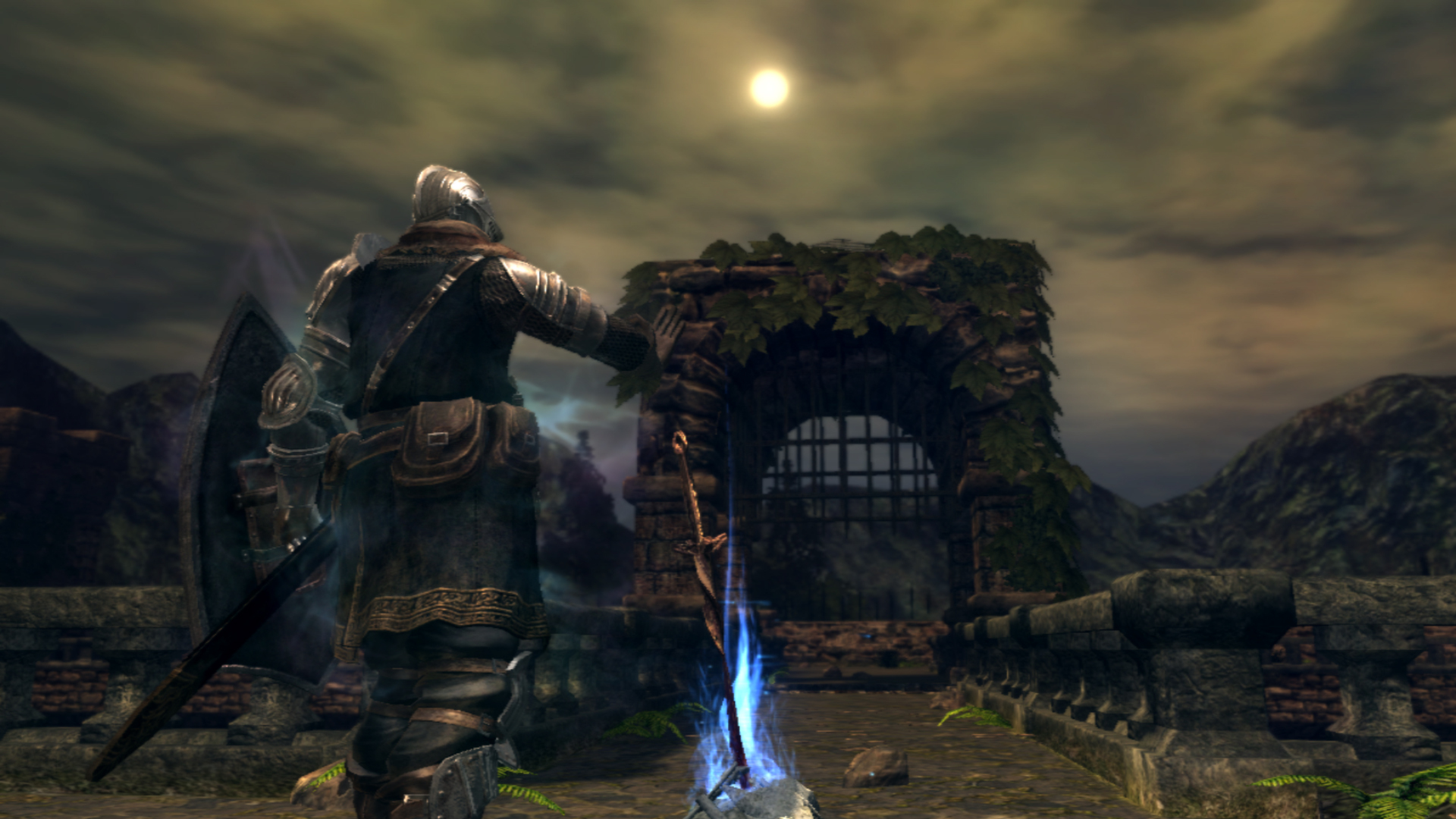The Dark Souls creators are some of the greatest pranksters in game development
FromSoftware devs are masters of tricks and traps.

This is part two in a five-part celebration of Dark Souls published in PC Gamer UK issue 331. For more quality articles about all things PC gaming, you can subscribe now in the UK and the US. Spoilers ahead for a few traps in Dark Souls, Dark Souls 3, and Sekiro.
Maybe you’ve met Kite Guy already. In the early hours of Sekiro, the player ascends Ashina Castle by leaping between rooftops patrolled by agile, feathered Nightjar Assassins. The first is hidden well enough to take players by surprise, a forced introduction for what lies ahead. More Nightjars hide behind corners or below awnings in places the player will likely intuit and approach from a cautious angle, taking out the assassins silently. It feels like a victory over the game designer, but as always, FromSoftware is one step ahead.
Attentive players might notice the kite billowing above Ashina Castle, and they might squint and see an X printed on its surface. They probably won’t know what the X marks, at least until they hear the approaching “wooooo” as a Nightjar leaps from the kite and careens toward the player like a clumsy meteorite.
Some players get hit, some dodge just in time, but if the hundreds of YouTube videos showing players’ first encounter with Kite Guy are anything to go by, everyone smiles.
A little joke goes a long way in FromSoftware’s dreary worlds. It takes a light heart to even consider pressing on through the compounded ruins of humanity’s failures in Dark Souls or the perpetually, aimlessly warring states of Sengoku-era Japan in Sekiro. So FromSoftware has always fucked with its players.
Patterns in enemy placement, item and NPC behaviours, level design tricks and traps and combat are often instilled and then subverted in clever ways just as soon as the player forms habits to anticipate or counter them.

One of the biggest foes players encounter in the original Dark Souls is a wyvern that harasses them on their initial journey through the Undead Burg. It eventually roosts at one end of a large bridge, breathing fire at anything that approaches. New players often assume that’s it, there’s no getting by. But with a bow and a couple bundles of iron arrows, it’s possible to get underneath the bridge and shoot the poor bastard’s tail over and over and over again. Do this (and only this) and the Drake Sword will drop, which is an incredibly powerful weapon for the first half of the game.
Keep up to date with the most important stories and the best deals, as picked by the PC Gamer team.
Mimics, or those creepy chests with teeth, are right at home in the Souls series, and From frequently uses them to prank players. In the original Dark Souls players won’t encounter a mimic until deep into the game at Sen’s Fortress, long after they’ve built up the habit to instantly open most chests. From there, it’s business as usual in Dark Souls 2, where players learn to spot the chain patterns next to each chest that determine whether they’re a mimic or not. But it always takes some time for them to show up. That is until Dark Souls 3, where the very first chest—From wouldn’t make the very first chest a mimic, right?—the very first chest, is a mimic.
Crystal Lizards are FromSoftware’s most patronising trap, comparable to the cheap thrill of finding a coin in the middle of a busy street. Because they drop valuable crafting materials (and are so very shiny), chasing the lizards on sight is instinct for gullible players. Following a Crystal Lizard into an abyssal pit or deadly ambush is From’s regular reminder that we can’t outpace base curiosity and avarice.
Cheeky red herring
Most cruel of all is the Pendant, an item players can choose at the start of a new game in Dark Souls. The item description is earnest, “A simple pendant with no effect.” But because the Souls games are stuffed with secrets and arcane processes, players couldn’t accept that a starting item was totally useless. Players experimented with it endlessly for months, only for FromSoftware’s president and creative lead Hidetaka Miyazaki to confirm that it’s useless in an interview with IGN. That’s one hell of a cheeky red herring.

And then there’s Patches, a seemingly omnipotent prankster character that, despite his shrill laugh, always asks for the players trust only to betray them. In the original Dark Souls, he knocks you off a bridge. In Dark Souls 3, Patches kicks you into a pit with a grumpy giant. It’s the same until Dark Souls 3’s final DLC, The Ringed City, where an amnesiac Patches steps out of his role as prankster spirit. As his memory returns, a familiar cutscene plays when he prods you towards some precariously perched treasure. But this time, the treasure is there, trap-free, and he dips before commenting on the cyclical nature of greed, a potent subversion and thesis for the series as a whole.
As infuriating as these tricks can be, they’re reminders of the human touch behind every FromSoftware game, and that the dev team knows we’re human too. They know humanity is doomed to repeat the same mistakes until our collective demise, they know From games are punishing as hell, but they also know we’re suckers for the little reasons we keep carrying on, for those little glimpses of light in the dark.
James is stuck in an endless loop, playing the Dark Souls games on repeat until Elden Ring and Silksong set him free. He's a truffle pig for indie horror and weird FPS games too, seeking out games that actively hurt to play. Otherwise he's wandering Austin, identifying mushrooms and doodling grackles.


